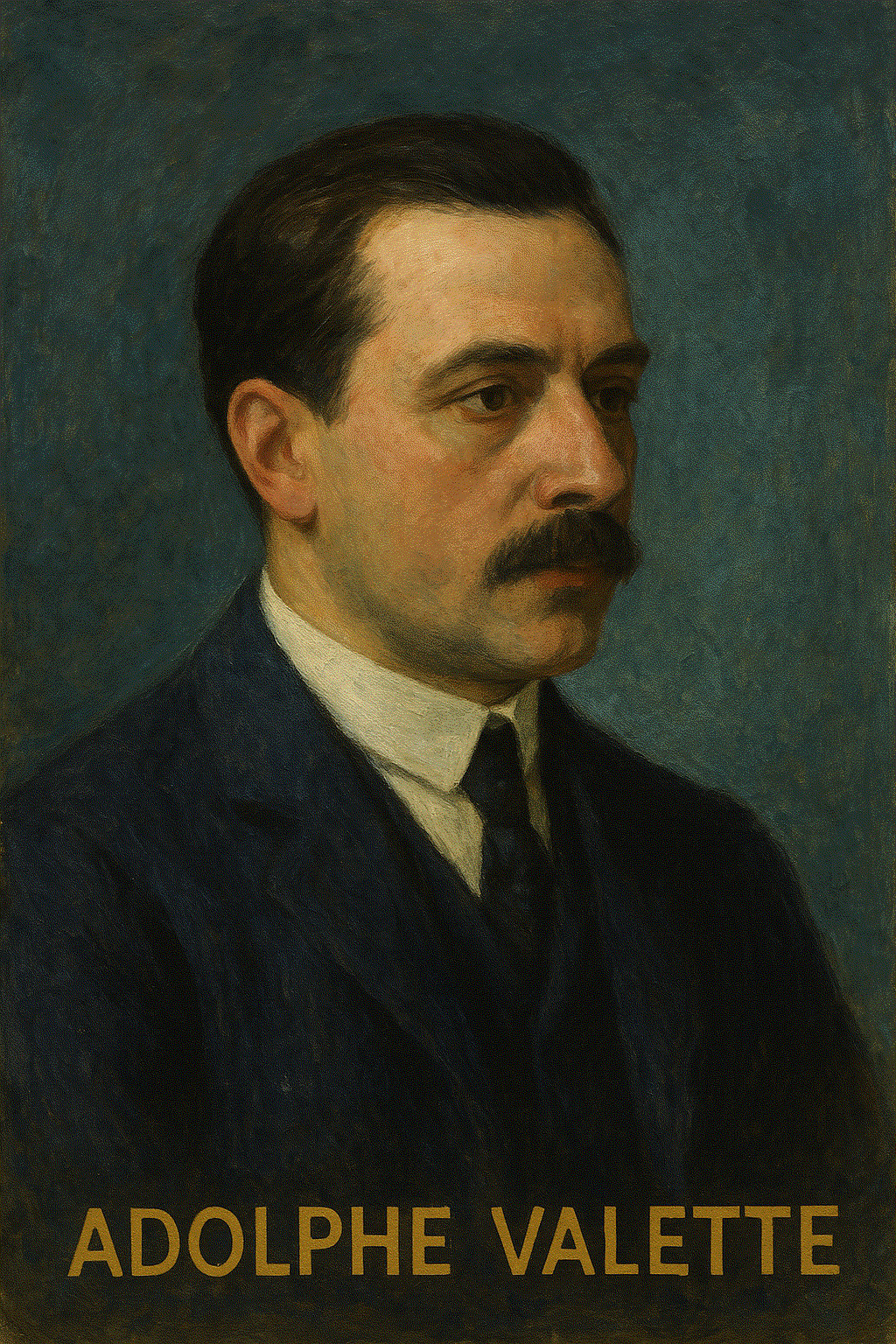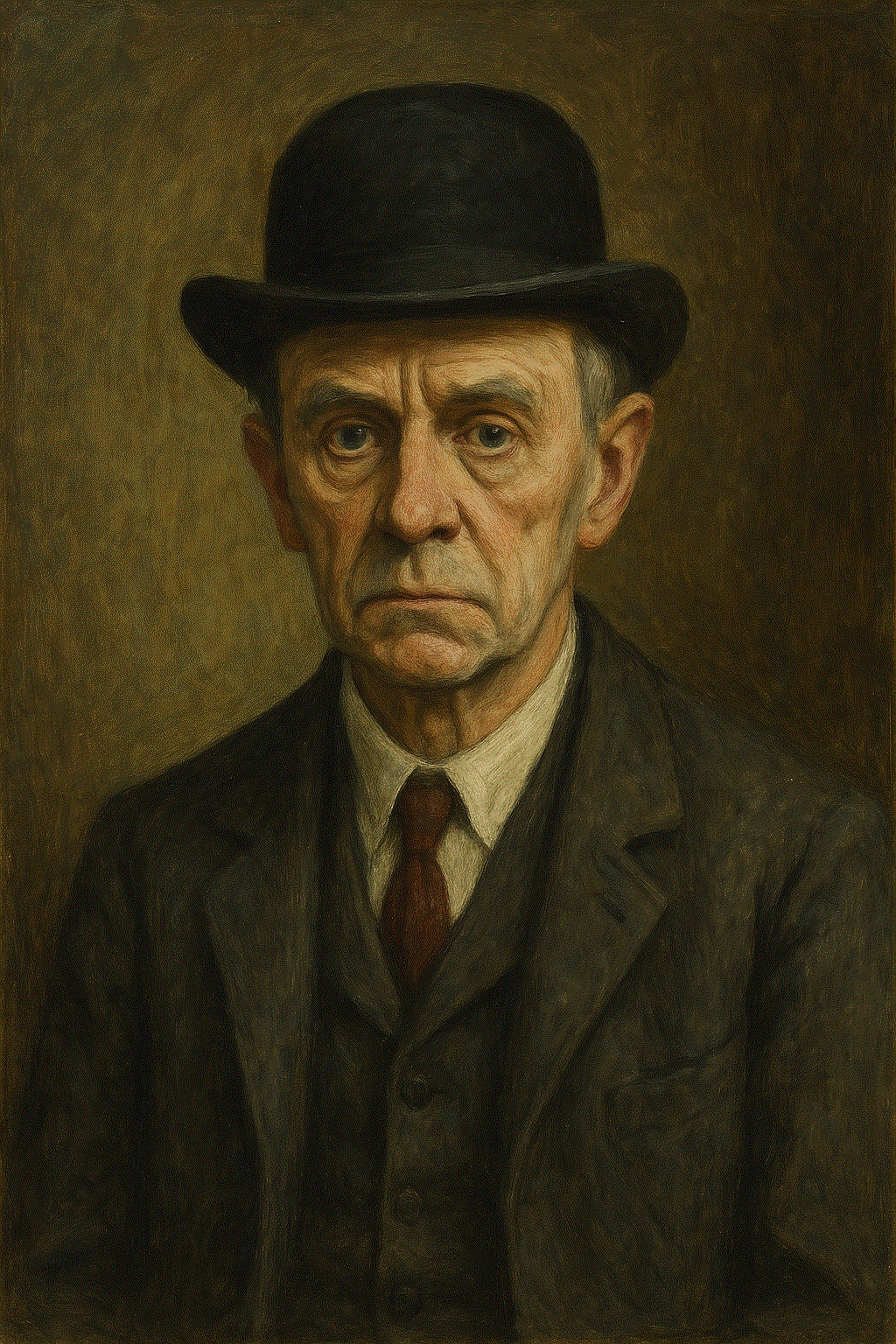Who was Adolphe Valette?

Adolphe Valette (1876–1942) was a French Impressionist painter who became a key figure in the British art scene after moving to Manchester in the early 20th century. Trained in France, he brought with him a mastery of light, atmosphere, and urban scenes—hallmarks of the Impressionist movement.
Bringing Impressionism to Manchester
In 1905, Valette arrived in Manchester, a city undergoing rapid industrial growth. He joined the Manchester School of Art as a tutor in 1906, where he introduced students to Impressionist techniques, emphasising the use of light, loose brushwork, and tonal contrasts.
His paintings of Manchester’s streets and industrial landscapes, often shrouded in mist, captured the city’s unique character. Works such as Oxford Road, Manchester (1910) and India House, Manchester exemplify his ability to depict both the beauty and bleakness of urban life.
Through his teaching, Valette influenced a generation of artists—most notably, L.S. Lowry.
Who was L.S. Lowry?

Laurence Stephen Lowry (1887–1976) is one of Britain’s most celebrated painters, famed for his depictions of industrial Northern England. His works often feature his trademark “matchstick men” and convey the energy, struggle, and resilience of working-class life.
Lowry’s Artistic Beginnings
Born in Stretford, Greater Manchester, Lowry initially trained as a rent collector while pursuing art in the evenings. He studied at the Manchester School of Art between 1905 and 1915, where he encountered Adolphe Valette.
Lowry struggled to find his artistic voice early on, experimenting with different styles before developing his distinctive industrial landscapes. His exposure to Valette’s Impressionist techniques, particularly the use of light and composition, helped guide his artistic development.
How Valette Shaped Lowry’s Style
While Lowry is often associated with his stark, stylised portrayals of industrial life, his artistic foundation was heavily influenced by Valette’s teachings.
Light, Atmosphere, and Composition
One of Valette’s most significant influences on Lowry was his emphasis on light and atmosphere. Valette’s Impressionist method of capturing the misty, smog-filled streets of Manchester resonated with Lowry, who later adapted this technique in his own way.
Lowry also absorbed Valette’s approach to composition, learning to create depth and structure within a cityscape. While Valette’s paintings leaned toward realism, Lowry simplified and abstracted his urban scenes, eventually developing his signature aesthetic.
Early Works Reflecting Valette’s Influence
Lowry’s early works, such as An Old Street (1919) and Coming from the Mill (1928), show clear traces of Valette’s influence. These paintings feature a more subdued palette and a focus on light and atmosphere reminiscent of Valette’s cityscapes.
However, as Lowry’s style matured, he moved away from Impressionism, refining his figures and adopting a more graphic, almost naive quality that became his trademark.
Valette and Lowry’s Shared Artistic Vision
Despite their stylistic differences, both artists shared a deep interest in depicting urban life—particularly the character and mood of industrial Manchester.
Capturing the Industrial North
Valette and Lowry both painted Manchester’s streets, mills, and factories, but from different perspectives. Valette’s Impressionist approach softened the industrial landscape, portraying the city through a poetic lens. His paintings evoke a dreamlike atmosphere, where factories fade into mist and light plays delicately across the streets.
Lowry, on the other hand, embraced the harsh reality of the industrial world. His paintings often feel more rigid, with stark lines and simplified figures that capture the movement and daily life of working-class communities.
Emotional and Atmospheric Qualities
Despite these differences, both artists imbued their works with a strong sense of atmosphere. Valette’s misty, moody cityscapes and Lowry’s bustling yet lonely streets share a similar emotional depth, reflecting different facets of the industrial North.
Both were observers of their environment, translating their surroundings into paintings that resonate with viewers even today.
The Legacy of Their Relationship
The artistic connection between Adolphe Valette and L.S. Lowry left a lasting mark on British art. Lowry often acknowledged Valette’s influence, crediting him with shaping his understanding of composition, light, and atmosphere. Though their styles diverged, Valette’s teaching provided Lowry with a strong artistic foundation.
Despite Valette’s significant contributions, he remained relatively unknown for much of the 20th century. Only in later years has his role in mentoring Lowry and introducing Impressionist techniques to Manchester been fully recognised.
Today, both artists are celebrated in major collections, including The Lowry in Salford and here at Contemporary Six. Their work continues to inspire, highlighting the importance of artistic mentorship and the evolution of style. While Valette’s cityscapes capture an atmospheric, poetic Manchester, Lowry’s industrial scenes depict the city’s bustling reality—two perspectives that together shape our understanding of Britain’s artistic heritage.
The artistic bond between Adolphe Valette and L.S. Lowry is a testament to the lasting influence of mentorship and stylistic evolution. Valette’s Impressionist teachings helped shape Lowry’s understanding of light, composition, and atmosphere—elements that remained present in his work, even as he developed his own distinctive style.
Though their artistic paths diverged, both painters captured the essence of Manchester’s industrial landscape, offering unique yet complementary perspectives. Their legacy endures in galleries, exhibitions, and continued scholarly appreciation.
For those interested in exploring their work further, a visit to The Lowry in Salford or our gallery here at Contemporary Six offers an opportunity to see firsthand how Valette’s poetic cityscapes and Lowry’s iconic industrial scenes continue to shape our perception of British art.


